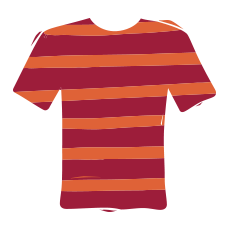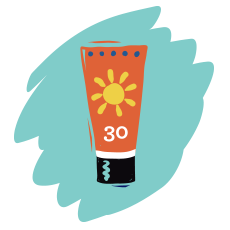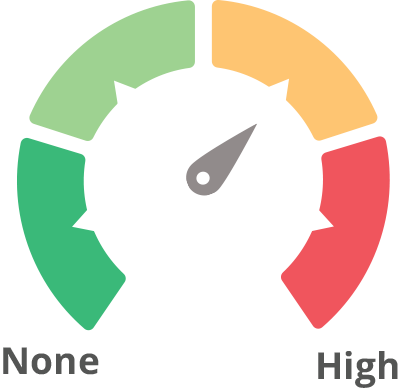

Please note that EWG obtains the displayed images of products from third parties and that the product's manufacturer or packager may change the product's packaging at any point in time. Therefore, EWG assumes no responsibility for the accuracy of images presented.
Close

EWG assumes no responsibility for the accuracy of images presented.
Sunscreens can break down while still in the bottle. To be safe dispose of products when the mixture clumps or separates.
This product contains chemical active ingredient(s) that the FDA does not have enough health safety data to classify as safe and effective: AVOBENZONE, OCTINOXATE, OCTISALATE, OCTOCRYLENE







Ingredients from label Active Ingredients: Avobenzone 3%, Octinoxate 7.5%, Octisalate 5%, Octocrylene 7.5%, Inactive Ingredients: Water/Aqua/Eau, Cyclopentasiloxane, Dimethicone, Cetearyl Alcohol, Cetearyl Glucoside, Potassium Cetyl Phosphate, Polyglyceryl-4 Isostearate, Dimethicone Crosspolymer, Tocopheryl Acetate, Glycerin, Cetyl PEG/PPG-10/1 Dimethicone, Cetyl Dimethicone, Polysorbate 60, Butylene Glycol, Hexyl Laurate, Colloidal Oatmeal, Phenoxyethanol, Sodium Dehydroacetate, Sodium Hyaluronate, Camellia Sinensis (White Tea) Leaf Extract, Carbomer, Tribehenin, Limonene, Tetrasodium EDTA, Aminomethyl Propanol, Citrus Nobilis (Mandarin Orange) Peel Oil, Allantoin, Sodium Ascorbate, Glycyrrhiza Glabra (Licorice) Root Extract, Chrysanthemum Parthenium (Feverfew) Extract, May Contain: Titanium Dioxide (CI 77891), Iron Oxides (CI 77492/CI 77499/CI 77491), Mica
Concerns: Developmental/reproductive toxicity (moderate), Allergies/immunotoxicity (moderate), Enhanced skin absorption, Neurotoxicity (low), Endocrine disruption (moderate), Persistence and bioaccumulation (low), Non-reproductive organ system toxicity (low), Biochemical or cellular level changes (high)
Concerns: Cancer (low), Developmental/reproductive toxicity (low), Allergies/immunotoxicity (high), Use restrictions (moderate), Persistence and bioaccumulation (moderate), Non-reproductive organ system toxicity (moderate), Ecotoxicology (low), Irritation (skin, eyes, or lungs) (high)
Concerns: Developmental/reproductive toxicity (low), Allergies/immunotoxicity (high), Use restrictions (moderate), Persistence and bioaccumulation (moderate), Ecotoxicology (low), Irritation (skin, eyes, or lungs) (high)
Concerns: Allergies/immunotoxicity (low), Enhanced skin absorption, Use restrictions (moderate), Endocrine disruption (low), Biochemical or cellular level changes (high)
Concerns: Developmental/reproductive toxicity (moderate), Allergies/immunotoxicity (low), Neurotoxicity (low), Endocrine disruption (moderate), Non-reproductive organ system toxicity (moderate), Irritation (skin, eyes, or lungs) (low)
Concerns: Use restrictions (moderate), Persistence and bioaccumulation (high), Non-reproductive organ system toxicity (moderate), Ecotoxicology (low)
Concerns: Allergies/immunotoxicity (low), Use restrictions (moderate), Non-reproductive organ system toxicity (moderate), Irritation (skin, eyes, or lungs) (high), Occupational hazards (high)
Concerns: Allergies/immunotoxicity (moderate), Use restrictions (moderate)
Concerns: Use restrictions (high), Ecotoxicology (low), Irritation (skin, eyes, or lungs) (high), Contamination concerns (NITROSAMINES and OXAZOLIDINE)
Concerns: Cancer (low), Neurotoxicity (low), Endocrine disruption (low), Persistence and bioaccumulation (high), Non-reproductive organ system toxicity (moderate), Ecotoxicology (low)
Concerns: Cancer (low), Allergies/immunotoxicity (moderate), Contamination concerns (HYDROQUINONE)
Concerns: Non-reproductive organ system toxicity (low), Contamination concerns (ETHYLENE OXIDE and 1,4-DIOXANE)
Concerns: Use restrictions (low), Non-reproductive organ system toxicity (low), Irritation (skin, eyes, or lungs) (low), Contamination concerns (ETHYLENE OXIDE and 1,4-DIOXANE)
Concerns: Enhanced skin absorption, Persistence and bioaccumulation (high), Non-reproductive organ system toxicity (low)
Concerns: Cancer (low), Allergies/immunotoxicity (low), Use restrictions (moderate), Endocrine disruption (low), Contamination concerns (BENZOIC ACID, 4-T-BUTYLBENZOIC ACID, BENZALDEHYDE, P-ANISIC ACID, ACETOPHENONE, and DIBENZOYLMETHANE)
Concerns: Allergies/immunotoxicity (low), Use restrictions (moderate), Persistence and bioaccumulation (low), Ecotoxicology (low), Irritation (skin, eyes, or lungs) (low), Biochemical or cellular level changes (high)
Concerns: Developmental/reproductive toxicity (low), Allergies/immunotoxicity (low), Use restrictions (low), Endocrine disruption (low), Irritation (skin, eyes, or lungs) (low)
Concerns: Use restrictions (moderate)
Concerns: Enhanced skin absorption, Non-reproductive organ system toxicity (moderate), Irritation (skin, eyes, or lungs) (high), Occupational hazards (high)
Concerns: Cancer (moderate), Allergies/immunotoxicity (low), Enhanced skin absorption, Use restrictions (moderate), Non-reproductive organ system toxicity (moderate), Irritation (skin, eyes, or lungs) (low), Occupational hazards (high), Biochemical or cellular level changes (high)
Concerns: Persistence and bioaccumulation (high), Non-reproductive organ system toxicity (low)
Concerns: Use restrictions (low)
Concerns: Use restrictions (low), Irritation (skin, eyes, or lungs) (low)
Concerns: Non-reproductive organ system toxicity (low)
Concerns: Irritation (skin, eyes, or lungs) (moderate)
Concerns: Use restrictions (low)
Concerns: Developmental/reproductive toxicity (low), Endocrine disruption (low), Non-reproductive organ system toxicity (low), Occupational hazards (high), Biochemical or cellular level changes (low)
Concerns: Irritation (skin, eyes, or lungs) (low)
Concerns: Enhanced skin absorption






UVA/UVB Balance

EWG's estimate of the UV protection provided by this product. An ideal sunscreen filters UVA and UVB rays evenly, but some sunscreens let too many UVA rays through.
Close